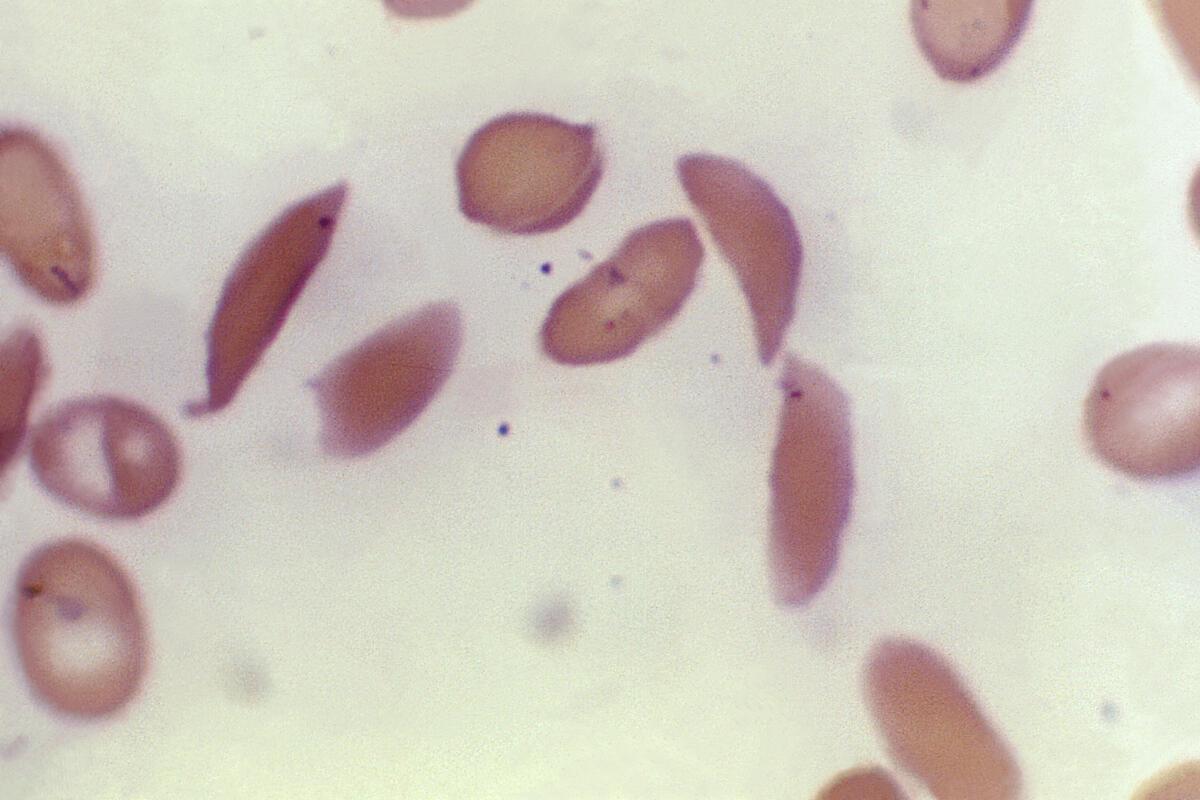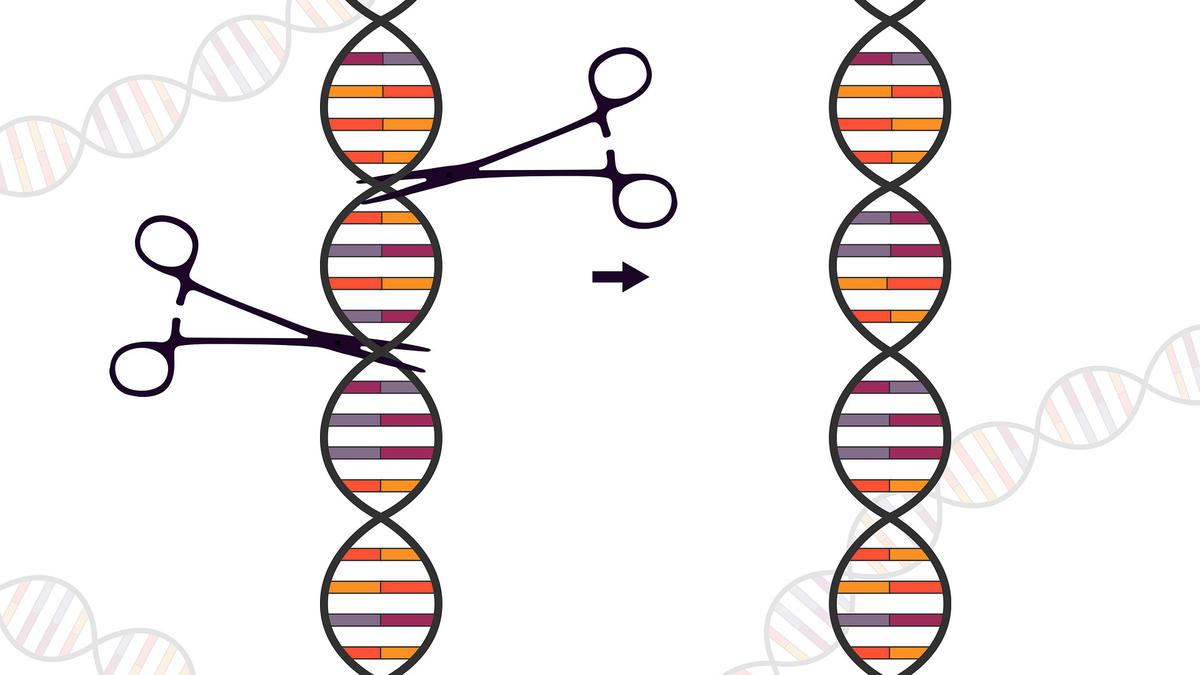Revolution In Treatment of Sickle Cell Anemia: CRISPER Cas9 - Dr Markandaiya Acharya
Sickle Cell Anemia is a hereditary blood disorder that affects millions of people globally. The traditional treatments for this condition often come with limitations and side effects, prompting researchers to explore innovative solutions. One such groundbreaking technology gaining attention is CRISPR Cas9.
In this article, we delve into the potential of CRISPR Cas9 in revolutionizing the treatment landscape for Sickle Cell Anemia.
Understanding Sickle Cell Anemia
Genetic Basis
- Sickle Cell Anemia is caused by a mutation in the HBB gene, leading to the production of abnormal hemoglobin known as hemoglobin S (HbS).
- Individuals with two copies of the mutated gene (HbS/HbS) develop Sickle Cell Anemia, while those with one normal and one mutated gene (HbA/HbS) are carriers but generally do not exhibit symptoms.
- Hemoglobin S tends to polymerize under conditions of low oxygen, causing red blood cells to deform and adopt a sickle shape.
- These sickle cells are less flexible and more prone to getting stuck in blood vessels, leading to vaso-occlusive events and reduced blood flow to organs and tissues.
Impact on Individuals
- Pain Crises: Sudden and severe pain episodes, known as vaso-occlusive crises, occur due to blocked blood vessels.
- Anemia: The destruction of sickle cells leads to a shortage of red blood cells, causing anemia.
- Organ Damage: Reduced blood flow can lead to damage to organs such as the spleen, kidneys, and lungs.
- Infections: Sickle cell patients are more susceptible to infections due to a compromised immune system.
Diagnostic Tools:
- Hemoglobin Electrophoresis: Identifies the presence of hemoglobin S in the blood.
- Complete Blood Count (CBC): Reveals anemia and changes in white blood cell and platelet counts.
- Reticulocyte Count: Measures the rate of red blood cell production.
Current Treatment Challenges
Traditional Treatments
- Blood transfusions to increase hemoglobin levels.
- Hydroxyurea to stimulate the production of fetal hemoglobin.
- Pain management for sickle cell crisis.
- Bone marrow or stem cell transplantation for severe cases.
Conventional treatments involve symptom management and blood transfusions, offering limited effectiveness.
Limitations and Side Effects
Limitations:
- Incomplete Cure: While treatments such as blood transfusions and medications can alleviate symptoms and improve quality of life, they do not offer a complete cure for Sickle Cell Anemia.
- Risk of Complications: Patients may still experience complications, including infections, organ damage, and stroke, despite ongoing treatment.
- Dependence on Blood Transfusions: Regular blood transfusions, while beneficial, come with the risk of iron overload, which may require additional treatments such as chelation therapy.
- Availability and Affordability: Access to specialized treatments, such as stem cell transplantation, may be limited by factors like availability, cost, and the need for a suitable donor.
- Long-Term Impact: The long-term effects of some treatments, especially in pediatric patients, are not fully understood, raising concerns about potential unforeseen consequences.
Side Effects:
- Blood Transfusion Reactions: Adverse reactions, including fever, allergic reactions, or transfusion-related acute lung injury, can occur during or after blood transfusions.
- Hydroxyurea Side Effects: Common side effects of hydroxyurea, a medication used to stimulate fetal hemoglobin production, may include nausea, vomiting, and bone marrow suppression.
- Complications of Transplantation: Stem cell or bone marrow transplantation carries risks such as graft-versus-host disease, infections, and rejection.
- Medication Side Effects: Some medications used for pain management or symptom relief can have side effects, including drowsiness, constipation, or addiction concerns.
- Psychosocial Impact: Living with a chronic illness and undergoing regular treatments can have psychological and emotional effects on patients, impacting their overall well-being.
The Promise of CRISPR Cas9
How CRISPR Technology Works
CRISPR-Cas9 technology is a revolutionary gene-editing tool that allows scientists to precisely modify genes within an organism. Here's a simplified explanation of how CRISPR-Cas9 works:
1. CRISPR RNA Design:
Scientists design a small piece of RNA, called guide RNA (gRNA), that matches the specific DNA sequence they want to modify.
This gRNA is engineered to complement the target DNA sequence with high specificity.
2. Cas9 Protein:
Cas9 is a protein that acts as molecular scissors. It is responsible for cutting the DNA at the desired location.
The gRNA is attached to the Cas9 protein, guiding it to the precise spot on the DNA where the cut needs to be made.
3. Targeting the DNA:
The engineered CRISPR complex (Cas9 protein + gRNA) is introduced into the target cells or organisms.
The gRNA guides the Cas9 protein to the matching DNA sequence within the genome.
4. DNA Cleavage:
Once the CRISPR complex locates the target DNA sequence, the Cas9 protein cuts the DNA at that specific point.
This cut triggers the cell's natural DNA repair machinery.
5. DNA Repair:
There are two primary ways the cell repairs the cut:
Non-Homologous End Joining (NHEJ): This often results in small insertions or deletions, causing gene disruptions.
Homology-Directed Repair (HDR): Researchers can provide a DNA template during this process to introduce specific changes or additions to the gene.
6. Genetic Modifications:
Depending on the repair method, the gene can be modified by disrupting its function or by incorporating new genetic material.
This ability to precisely edit genes has significant implications for various applications, including genetic research, agriculture, and potential medical treatments.
Targeting the Genetic Roots of Sickle Cell Anemia
CRISPR offers the potential to correct the genetic mutation responsible for Sickle Cell Anemia, providing a more effective and long-term solution.
CRISPR Cas9 Success Stories
Vertex Pharmaceuticals and CRISPR Therapeutics announced unpublished results from a clinical trial of beta thalassemia and sickle cell patients treated with CTX001, a CRISPR-Cas9-based therapy.
In both cases, the therapy does not shut off a target gene but instead delivers a gene that boosts production of healthy fetal hemoglobin—a gene normally turned off shortly after birth.
Fifteen people with beta thalassemia were treated with CTX001; after three months or more, all 15 showed rapidly improved hemoglobin levels and no longer required blood transfusions.
Seven people with severe sickle cell disease received the same treatment, all of whom showed increased levels of hemoglobin and reported at least three months without severe pain.
More than a year later those improvements persisted in five subjects with beta thalassemia and two with sickle cell. The trial is ongoing, and patients are still being enrolled.
A Vertex spokesperson says it hopes to enroll 45 patients in all and file for U.S. approval as early as 2022.
Addressing Ethical Concerns
- While CRISPR holds potential for curing diseases, there's concern about unintended mutations.
- Editing embryos or germ cells raises ethical questions, as genetic changes would be inherited by future generations, potentially altering the entire human species.
- Ecosystem alteration using CRISPR sparks debates on biodiversity and the ethical right to manipulate nature.
- Determining limits on gene editing poses challenges—whether for medical reasons or aesthetic preferences.
- CRISPR's impact on humanity raises profound questions about our essence and the unprecedented consequences of its use.
Conclusion
In conclusion, CRISPR Cas9 holds tremendous promise in revolutionizing the treatment of Sickle Cell Anemia and beyond. As researchers continue to refine the technology and address ethical concerns, the future of gene editing appears brighter than ever.





Comments
Post a Comment